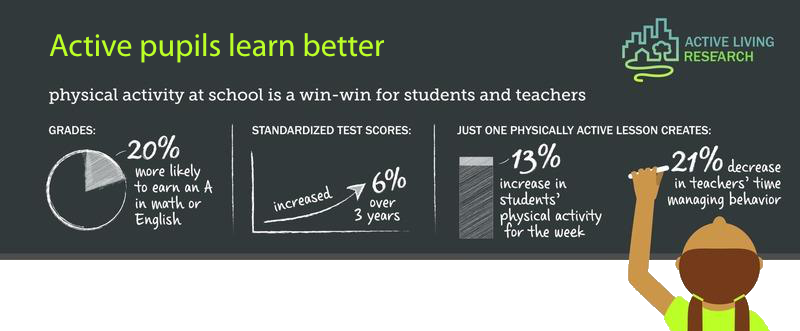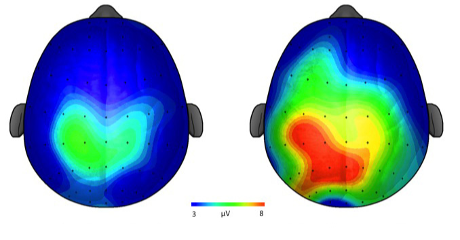We all know that living a more active lifestyle is good for us, but did you know that physical activity in an education environment dramatically increases pupils’ learning and retention?
There is a plethora of research around physical activity and the impact on pupil performance. Studies have also started to look at active learning within the classroom too.

Physically active pupils:
- 20% more likely to achieve top grades in Maths and English
- Show standardised test scores increase by 6% over 3 years
- See a 21% decrease in teachers time spent managing behaviour
- After one active lesson, a child can improve their Maths performance by as much as 16%.
- After 20 minutes of physical activity, students scored better in Reading, Spelling & Maths, while also being more likely to read above their grade level.
- After being in a physically active after school programme for 9 months, students memory tasks improved by a substantial 16%.
Research from around the world supports the use of physically active learning over longer periods of time. After 2 years, children who learn in an active way could be four months ahead in Maths and Spelling compared to traditional seated classroom learning.

Left: 20 minutes of sitting quietly
Right: 20 minutes of walking
How can you adopt it within your school?
The simple answer may be to increase PE and break times, however with standards to meet, policies to adhere too and the school day mapped out down to the last second, there is no easy way for schools to make a giant change, or is there?
Daly Smith (2018) states that “physically active learning involves fusing movement with traditional learning activities. While a common approach in reception classes, in most schools, seated learning dominates from Year One. Yet, physically active learning is suitable for all ages and can take a variety of forms.”
These benefits are recognised by organisations such as the National Association of Head Teachers, who passed a motion to encourage all schools to adopt physically active learning.
Popular classroom-based approaches can include performing a particular movement to answer the register, placing learning challenges on boards in different corners of the room. Outside of the classroom, active spelling relays or number challenges in the playground can aid the learning of the core National Curriculum subjects. Exploring fields and woodlands provides a fantastic way to combine movement with learning outside beyond the more formal learning opportunities.
PH Sports are committed to delivering active learning opportunities to improve academic performance with programmes such as Maths on the Move, increasing pupils soft skills through our approach to delivering PE and providing active after school environments to engage pupils when the school day has finished.
If you’re interested to find out more about how PH Sports can implement physically active learning within your school, contact our team or send us a message through the website.
References
Castelli, DM, et al. Active Education: Growing Evidence on Physical Activity and Academic Performance. San Diego, CA: Active Living Research; 2015. Active Living Research
Daly-Smith, A., 2018. How Can Physical Activity Help A Child Do Better In School?. [online] BBC Sport. Available at: <https://www.bbc.co.uk/sport/amp/supermovers/46020689> [Accessed 10 June 2020].
Donnelly, J., Greene, J., Gibson, C., Smith, B., Washburn, R., Sullivan, D., DuBose, K., Mayo, M., Schmelzle, K., Ryan, J., Jacobsen, D. and Williams, S., 2009. Physical Activity Across the Curriculum (PAAC): A randomized controlled trial to promote physical activity and diminish overweight and obesity in elementary school children. Preventive Medicine, 49(4), pp.336-341.
